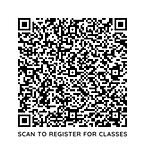A Body in Motion Will Stay in Motion...

Life begins and ends with movement. Movement begins and ends with strength. People depend on their bodies’ abilities to move in space in order to stand and sit, to fall and recover, and to move and rest. Pilates promises to improve freedom of motion with correct alignment. Good posture allows for confident activity and positive aging. With consistent and practical movement practice through Pilates, the body gets stronger.
Pilates strengthens bones and muscles by using spring resistance embedded in an apparatus. You use small props, such as balls, circles, bands, poles, along with the mat and apparatus work. As children, we learn to roll over, sit, crawl, stand, walk, run, skip and jump. Aging robs us of these activities in reverse. Life begins with gaining strength and life ends with losing strength. How do you delay and interrupt loss of muscle and bone strength? The answer is movement.
Movement starts with the feet. Pilates classes begin “feet first”. The first five exercises on the Pilates Reformer address the strength, articulation, and balance of the feet. Lying on your back with your feet on the foot bar, the practitioner presses the carriage of the Reformer backwards eight times from the ball, arch, and heel of the foot respectively, followed by lowering and lifting of the heels with the carriage fully extended. Prancing, alternating right and left feet, completes the series.
Next, Pilates focuses on upper body strength. Moving the arms from the abdominals and connecting their origin to the back allows them to move like wings. The back supports and moves the arms, thus reducing strain on the shoulder joint. Pilates arm exercises consist of pulling the arms down toward the mat, first straight and then with bent elbows attached to the mat. The “Hundred” follows with the head lifted, the arms beating up and down, the legs extended on the high diagonals, and the abdominals scooping, “navel to spine,” as the back imprints into the mat. Basic arms circles emanating from the abdominals, out from the center of the body, and in, toward the center of the body, with the legs bent at a ninety degree angle complete the set. Alternating between bent and extended legs protects the back from strain.
The reason leg strength is addressed third in the Pilates Reformer syllabus is simple. Foot, arm and back strength, supported by the core, are as essential to balance as the legs. Imagine the legs attached not at the hips but at the navel. As the abdominals scoop, imprinting the spine, “navel to spine," into the mat, the legs straighten and the muscles lengthen. Strength is maintained and sustained without injury. Combining spring and strap resistance super charges the body’s ability to rapidly increase muscle strength and bone density.
The inner thigh muscles (adductor), along with the transverse abdominals (lower abdominals), the back (lattissimus dorsi), and the side abdominals (internal and external obliques) combine to make up the Pilates powerhouse. This powerhouse controls the body’s strength and balance placing tension correctly into the body’s center and out of the shoulders. Alleviating shoulder and neck tension relieves pain and allows for ease of movement. Pain inhibits activity.
Next up, sitting on top of the Pilates short box and hooking the feet under the strap produces the right resistance for tilting the pelvis under and releasing the torso backwards toward the “well” of the carriage. Hint: Keep the knees flexed to allow for maximum core engagement. Flipping the box vertically and using the pull straps with light resistance, the muscles of the back are strengthened and lengthened. The shoulders and neck are supported by the stability of the back.
Standing on the floor next to the Reformer with one leg perched on top with the knee connected to the mat and a medium spring load, the working leg presses the carriage out activating the muscles of the bottom (glutes). After eight to ten repetitions, lift the working knee off the carriage to further engage the glutes, stabilizing the hip joint. As in all Pilates exercises, the abdominals initiate the movement of the limbs. They become an extension of the core. Years of overworking the joints is stressful and eventually, debilitating. To counter the overuse, overall body strength emanating from the abdominals is key.
Power, posture, balance and proper alignment allow the body to participate in daily physical activities. From walking to running, hiking to dancing, standing and sitting, lifting to reaching, the body needs to move efficiently and correctly. Stationary activities do nothing to increase strength. The simple acts of standing and sitting from a chair trigger multiple muscle groups. Allowing the abdominals to lift and lower the body without pushing on the thighs with the hands is essential to overall health. Lowering yourself to the floor and lifting yourself up, without using your hands, proves to be a good indicator of longevity and health.
Pilates may look difficult when perusing Instagram, YouTube, and Facebook; but, it is actually organic with a slow progression. The principles of “feet first” and “navel to spine” enable the body to strengthen itself, providing movement to Every Body.


.png)


